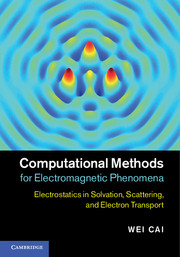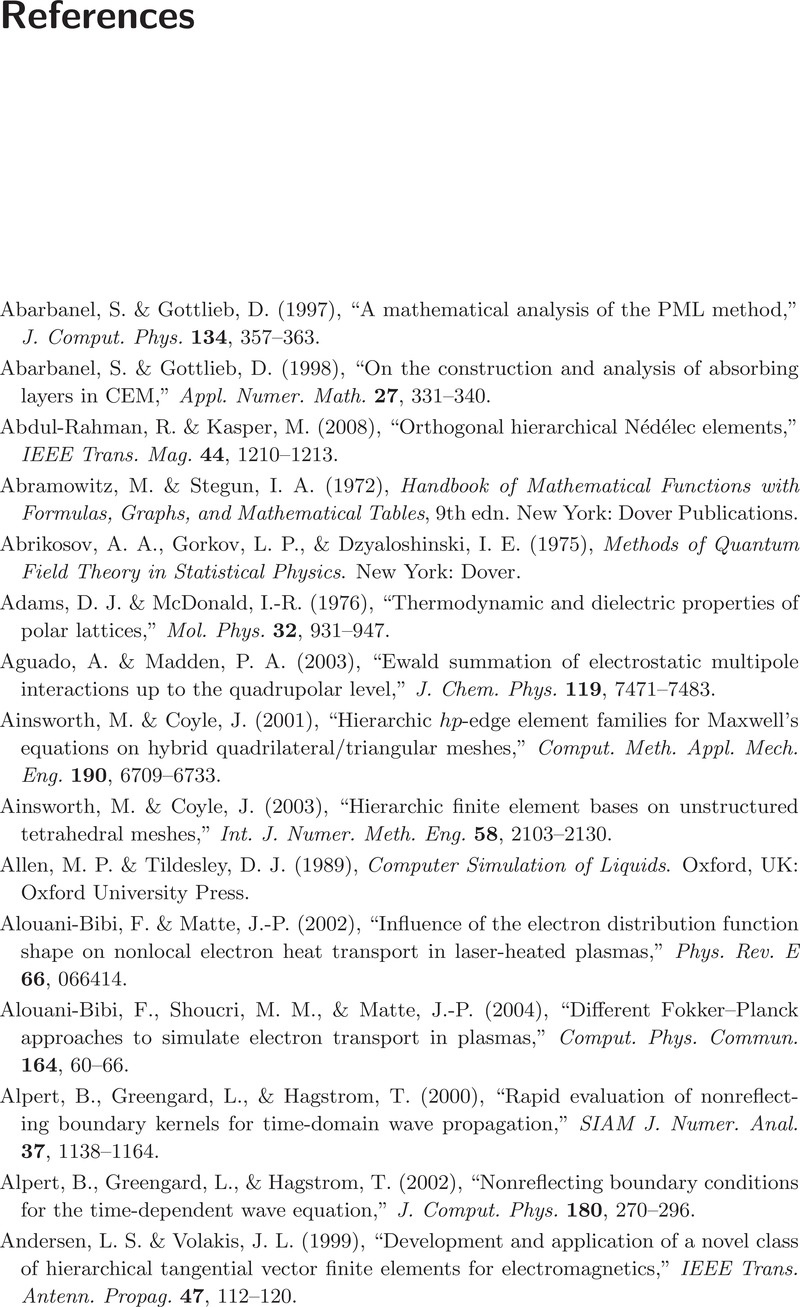 Computational Methods for Electromagnetic Phenomena
Computational Methods for Electromagnetic Phenomena References
Published online by Cambridge University Press: 05 February 2013
Summary

- Type
- Chapter
- Information
- Computational Methods for Electromagnetic PhenomenaElectrostatics in Solvation, Scattering, and Electron Transport, pp. 419 - 440Publisher: Cambridge University PressPrint publication year: 2013


